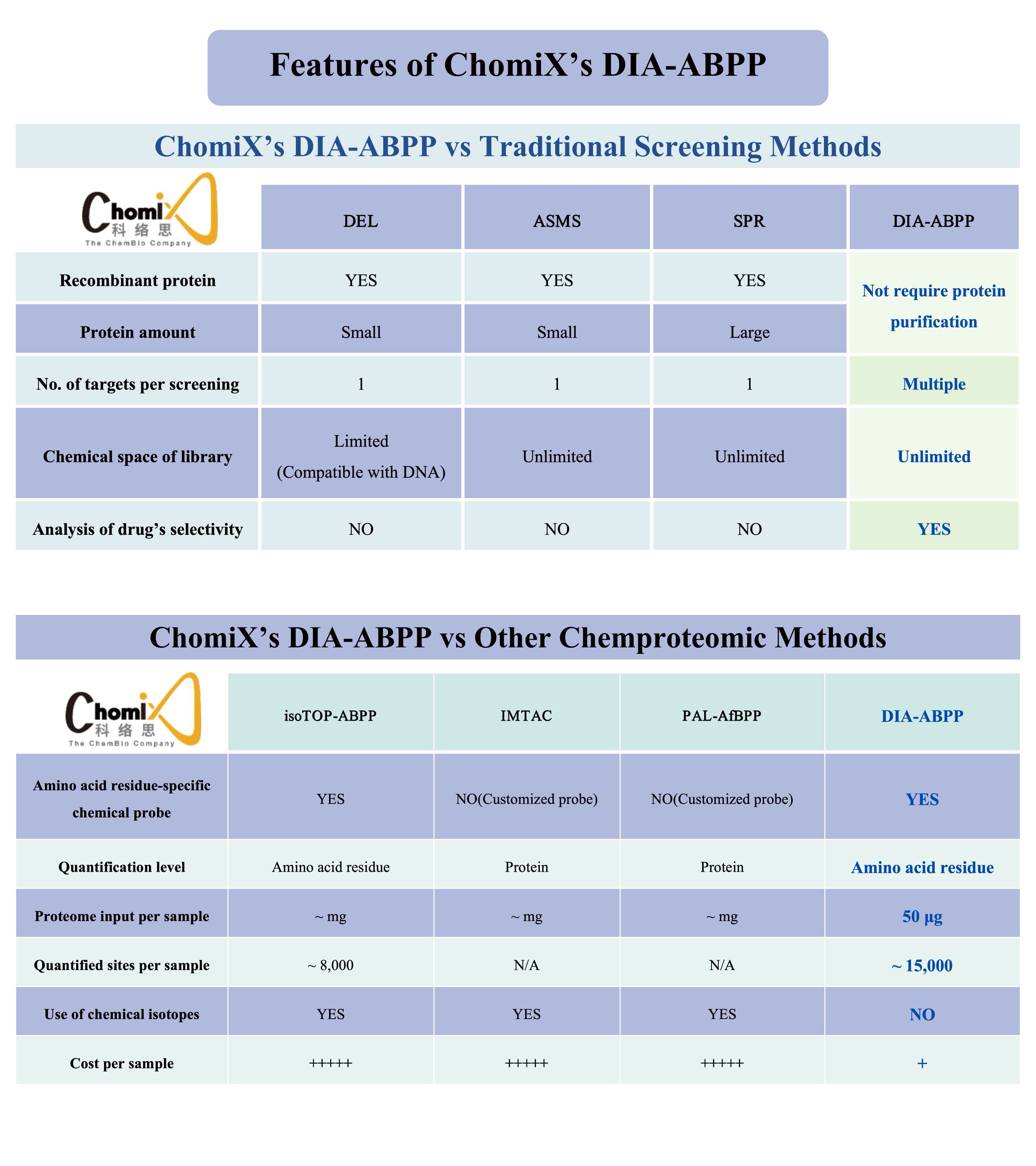Our scientific platform, ChomiX Screen, which is based on DIA-ABPP (Data Independent Acquisition-Activity Based Protein Profiling), is an important part of our ABPP-leading methodology. Through our ChomiX Screen technology platform, we can screen covalent lead compounds for undruggable targets. The specific process includes covalent molecule treatment of living cells, separation and enrichment of chemical probe-labeled peptides, high-resolution mass spectrometry detection, and construction of a drug-target-site binding network. This enables us to evaluate the binding ability and selectivity of drugs for specific amino acid residue pockets on multiple protein targets simultaneously, generating candidate compounds.At present, we have built a comprehensive protein target library, including the largest domestic library of covalent compounds targeting cysteine, based on our chemical probe library and other characteristic core modules.

The occupancy rate of the binding site (Protein_Cys site) for each compound is determined using the mass spec intensities of quantified probe-labeled peptides. In essence, the cysteine-specific probe competes with compounds for binding to a certain binding pocket. The lower the signal of the probe-labeled peptide, the stronger the compound's occupancy capability. For each cysteine site of the protein of interest (POI), the determination of dose-dependent target engagement ratios (TE50) is conducted for selected compounds. Hit candidates are then confirmed through the ranking of their TE50 values. The lower the TE50, the stronger the compound occupies the cysteine site of POI in living cells.


